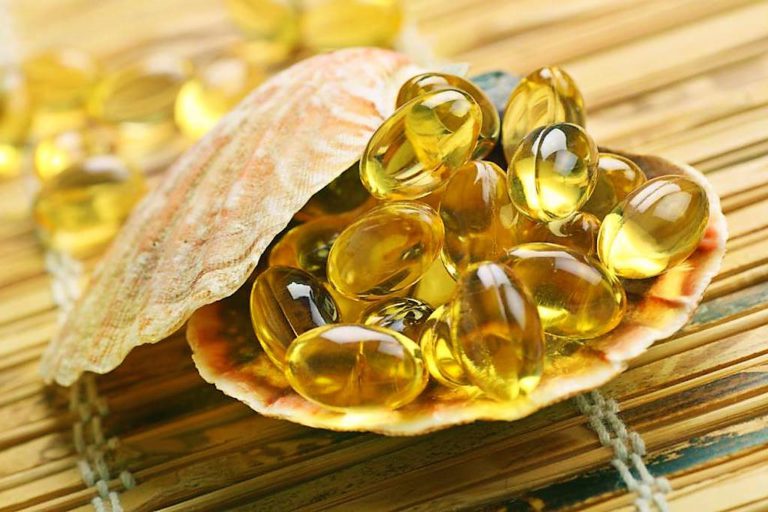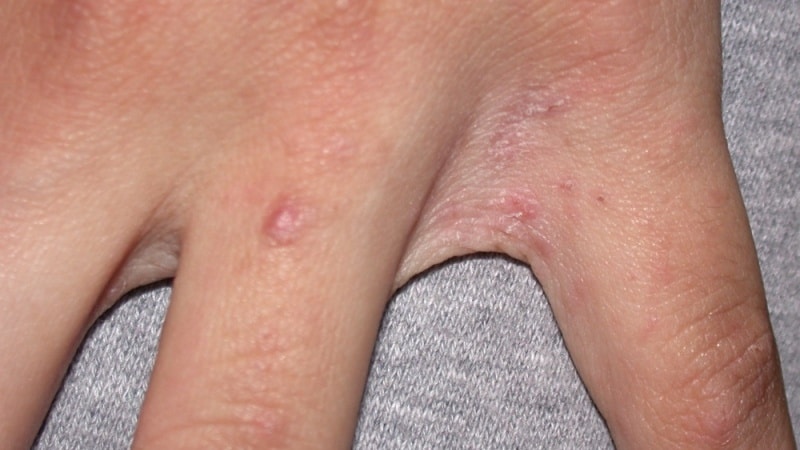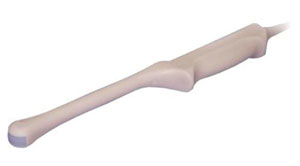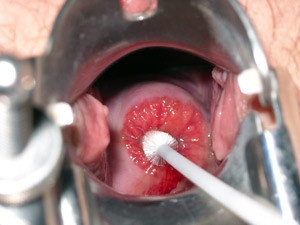“Oh, oh!” - the son cries out, scorched by nettles. And I reassure him in the same way as when my mother reassured me as a child: “Nothing, dear, this is useful!”
And once I thought, or maybe this is really useful? After all, my mother is not just a loving, caring woman, but also an intelligent and rational person.
 And she just started asking this question to the search engine, when she realized that not only me was comforted with such a phrase. Unfortunately, there were very few clear answers to my request, mainly in forums where people expressed their personal opinion, not supported by an information base. On this, of course, I decided to dig a little deeper.
And she just started asking this question to the search engine, when she realized that not only me was comforted with such a phrase. Unfortunately, there were very few clear answers to my request, mainly in forums where people expressed their personal opinion, not supported by an information base. On this, of course, I decided to dig a little deeper.
And that’s what I found out. It turns out that the benefits of nettle burn really are! Indeed, at the time of a nettle “bite”, blood instantly rushes to the upper layers of the skin, the work of capillaries intensifies, thereby stimulating the general blood circulation. 
You will not believe it, but there are even special treatment methods based on nettle burns. They are aimed at combating diseases such as rheumatism, arthritis, atherosclerosis, varicose veins. And the method consists precisely in numerous nettle burns that improve blood flow to a specific area of \u200b\u200bthe body.
And even with a “bite” of nettle, formic acid, known for its analgesic properties, enters our body. You ask how it gets inside, because the nettle just burns? And here it is, she bites. Now I’ll tell you everything.
 How "bites" nettle.
How "bites" nettle.
Nettle bite is very similar to a mosquito bite. And according to the mechanism of action and the final result ("buns" on the skin that itch). The whole "body" of the nettle is covered with thin hairs (you probably noticed that the stalk and leaves of the nettle are soft and velvety). But these soft hairs are not as safe as it seems at first glance. Inside, they contain the very substances that cause the burn: choline, histamine, and the formic acid mentioned above. Like the proboscis of a mosquito, the hairs pierce the skin almost imperceptibly for us and release their useful “poison”. Although useful not for everyone.
Damage to nettle burns.
There is good news - in our area there are no such species of nettles that can cause a reaction that is dangerous to human life. Except in cases of severe allergies to the substances contained in this plant. However, these are indeed very rare cases. Fortunately.
Therefore, the main harm is painful discomfort in the burn area, redness, slight swelling.
How to get rid of discomfort with a nettle burn. 
What to do with nettle burns? Do not panic. Even if a small child is burned. After all, it will pass quickly and also ... it is useful! As we found out above. The main thing is, just in case, drink an antihistamine: suprastin, loratadine, diazolin or others (after all, we already know that only severe allergic reactions pose a danger). This would be the end, but there is still discomfort and redness and I would like to get rid of them. Here's what you can do:
- hold the burn site under a stream of ice water or lower the limb that was burned into ice water;
- alcohol (or vodka) lotions also help;
- dilute the soda to a state of gruel, densely apply gruel to the burn site.
 What else is good in nettles.
What else is good in nettles.
In general, nettle is useful not only when it “bites”. It is, in principle, useful. The plant is very rich in vitamins and minerals.
When eaten, it helps us to be strong, healthy and beautiful, tones, gives strength, helps the immune system. Put in the salad young leaves of nettle or cook nettle soup. Tasty and healthy!
Nettle is also used in cosmetology. A decoction of this plant regularly wash the face in the presence of inflammation, acne, boils. Nettle-based masks give hair shine, hair strengthens and grows pretty quickly.
And doctors, herbalists, homeopaths and simply connoisseurs of well-being are well aware of nettles as a medicinal plant. The best recipes for health we have put together in a small video block:
Good luck and health!
Nettle leaves are a storehouse of vitamins. There is 4 times more ascorbic acid than in lemon, and there is more vitamin K than in spinach and cabbage. The mineral composition of nettles is also rich: it contains a lot of proteins, organic acids, tannins, essential oils, sugars and other biologically active substances.
According to the recommendations of traditional medicine, nettle is used in the form of fresh juice, infusion or broth. Juice can be obtained using a juicer. He is prescribed 20 drops per quarter cup of warm water or milk 15-30 minutes before meals 3 times a day.
The infusion is done as follows: 10–20 dry nettle leaves are poured with a glass of boiling water in a thermos and kept for an hour, then filtered. If the same amount of leaves and water is brought to a boil, hold for 2–3 minutes under the lid on a fire, then insist and strain, a decoction is obtained. And the infusion and broth drink 2-3 tbsp. tablespoons 20 minutes before meals 3-5 times a day.
In the old days they drank nettle juice and rubbed it in a bath. When "nadezhda" whipped in the bath steamed nettle stalks on the lower back. Nettle infusion was given to scrofulous children inside and at the same time, nettle baths were made. Decoction of the root was drunk from sexually transmitted diseases and with fever.
For severe hemorrhoidal pains, you can use a mixture of nettle leaves and buckthorn bark: 8 g of each plant pour 1 liter of boiling water, keep on low heat for 15 minutes, then filter and consume 0.5 cups before eating warm 3 times a day. With bleeding, you can combine nettle juice with yarrow juice.
Juice, infusion and nettle broth are used externally to treat wounds, trophic ulcers, burns. Mashed nettle leaves are applied to the wound (before that, they must be washed with boiled water) or a piece of gauze moistened with nettle juice. For the treatment of rheumatoid arthritis, diseased joints are rubbed with fresh nettle juice. The same thing is done with gout, radiculitis, myositis.
Nettle root, boiled with sugar, or seeds (1–2 g at a time), ground in water, help with kidney stones and gall bladder. In chronic skin diseases, an infusion of nettle flowers can be applied externally.
Nettle is well known in cosmetology. Extracts from it are part of many creams and lotions. Mask for young nettles is good for aging facial skin: the leaves are washed and passed through a meat grinder or juicer, the skin is rubbed with the juice obtained or the gauze is moistened and applied to the face.
To strengthen and enhance hair growth, as well as against dandruff, rub fresh juice of nettle or infusion into the skin: 1 tbsp. a spoonful of nettle leaves is brewed with a glass of boiling water, insisted for 1 hour in a thermos, and then, after washing the hair, rubbed into the roots. This can be done once a week for 1-3 months.
Spring and summer are the best time for harvesting nettle leaves for future use. They are torn with gloves or the upper parts of the stems are cut off, and the leaves are torn off after a few days, when they fade and stop stinging.
Nettle is dried in the attic or under a canopy with good ventilation, spreading a thin layer of 2-4 cm on a grid, fabric or paper. But nettle cannot be dried in the sun: leaves lose valuable substances. Strongly overdrying the leaves is also not recommended: they become brittle, turn into powder. Nettle is dried when the veins and petioles begin to break. Nettle leaves can be stored for up to 2 years in a dry, well-ventilated area.
Up ▲ - Reader reviews (0) - Write a review ▼ - Print version
In total, there are about 50 species of nettle. The most common in Russia were nettle and stinging nettle. Nettle has a diuretic, laxative, anticonvulsant, expectorant, wound healing, general strengthening effect. Nettle extract is used to stop prolonged or heavy bleeding in women. Nettle is prescribed for the treatment of hundreds of various diseases, including stones and gall, liver and biliary tract diseases, hemorrhoids, heart diseases, tuberculosis, allergic reactions, bronchitis, skin diseases, etc.
Nettle is a storehouse of vitamins and minerals. Its leaves contain twice as much ascorbic acid in comparison with currants. Nettle is also rich in carotene, vitamins B2 and K. Nettle is a source of salts of iron, potassium, sulfur, vegetable protein and pantothenic acid. It improves blood coagulability, increases hemoglobin and reduces the concentration of sugar.
In cosmetology, nettle is used in hair and scalp care. It stops hair loss, improves their appearance, and also successfully fights dandruff. Nettles are even used as food: cabbage soup and salads are cooked from it.
Why stinging nettle
The leaves and stalk of the nettle are covered with thin spikes called stinging cells. At the end of each of them is a bag of liquid, which includes acid, histamine and vitamin B4 - choline. If you touch the plant, damaging the thorns, the contents of the pouch will penetrate the skin. This place starts to itch, and looks like a burn. The reaction, from skin lesions, causes pain and is extremely unpleasant. It is impossible to wash off the liquid, since it penetrated under the skin. Basically, the contents of the sac do not harm the human body and animals, although it is known that a severe allergic reaction that can be fatal sometimes develops on a burn of a tropical nettle species - Ongaonge.
The stinging properties of nettle are similar to the mechanism of action of stinging cells of jellyfish, sea anemones, and other aquatic inhabitants. Amazing stings are folded into a glomerulus and straighten when touched. Therefore, when collecting nettles, it is necessary to break the stem in a neat but firm motion so that the thorns remain pressed against it. Then the glomerulus at the end of the spike will remain unscathed and the liquid will not penetrate under the skin. If the lesion still happened, then it is necessary to neutralize the effect of the acid by alkaline reaction. This can be done using sorrel juice or baking soda. A paste of soda mixed with a small amount of water is applied to the affected skin and kept until the burning disappears.
Nettle is a plant found almost all over the world. This plant, generally speaking, is a herbaceous perennial, which means that nettle has all the properties of herbs and grows in the same places from year to year. The leaves and stems of the nettle are covered with brittle hollow “hairs” that act as needles for intradermal injection when touched. Plant chemicals pass through these hollow tubes and cause an unpleasant burning sensation and rash on the skin. Nettle burns are quite painful, but can be cured.
Steps
How to clean the affected area
To begin with, do not touch the burned place. If possible, do not touch or rub the affected area for 10 minutes. Pour nettle burnt place with clean water and do not touch it. Even if the pain or itching intensifies within the first few minutes, try not to rub or touch the affected area, otherwise the pain or discomfort may last for several days.
Use water and soap. Wash the burned area with soap and water - this will help remove the plant chemicals that can cause pain, swelling, redness and itching. Very often, after washing the affected area, the redness and pain go away completely or significantly decrease.
Use a clean cloth. If you don’t have soap and water at hand, then take a clean piece of cloth (this may be part of your clothes or a handkerchief) and carefully remove dirt and plant elements so that the skin is completely clean.
Use tape. Use masking tape or adhesive tape to gently wipe the affected area of \u200b\u200bthe remaining fibers that irritate the skin with gentle soaking movements.
Try using wax for hair removal. If tape did not manage to completely remove all elements of the plant from the skin, then you can try to remove them with wax to remove hair.
Avoid exposure to high temperatures. Take a bath or shower with cooler water. Try to avoid exposure to heat on the nettle burn site. Lower temperatures soothe the skin better and help reduce redness and inflammation.
Use over-the-counter drugs. Creams, ointments, or lotions containing hydrocortisone can help reduce redness and stop itching.
When to see a doctor
- difficulty breathing, wheezing, or a feeling of constriction in the throat;
- a feeling of stiffness in the chest, which makes it difficult to breathe;
- swelling in the mouth, including swelling of the lips or tongue;
- a rash that spreads outside the area of \u200b\u200bthe nettle burn - sometimes a rash can appear throughout the body;
- indigestion, cramps, vomiting, or diarrhea can sometimes also be signs of an allergic reaction.
-
See your pediatrician if a small child burns with nettles. The doctor can prescribe creams or ointments, talk about the treatment of symptoms after a nettle burn, characteristic only of small children.
Call a doctor if symptoms are severe. If a sufficiently large area of \u200b\u200bskin has been exposed to nettles, or if symptoms persist within 24 hours, consult a doctor. Your doctor may prescribe strong creams, ointments, or oral medications that can help your body fight your body’s reaction to a nettle burn.
-
See your doctor if the affected area appears to be infected. If the area affected by the nettle was scratched or scratched, or if it simply had some damage on the skin, then the likelihood of infection.
- If the area with damaged skin is warm when touched, if pus comes out of the wound, or if it looks more inflamed than other areas, then the likelihood of developing an infection is high. See your doctor right away if you have any of these symptoms or if your temperature rises. The doctor may prescribe creams or ointments that need to be applied to the inflamed area, as well as a course of antibiotics.
Seek medical attention immediately if allergy symptoms worsen. In rare cases, nettle can cause a severe allergic reaction, especially if a person is allergic to any of the chemicals that are found in nettles. Allergic reactions can be life-threatening, therefore, in such cases, immediate medical attention is needed.
Recognize an allergic reaction. Call an ambulance immediately by phone 103 (from a mobile phone) or 03 (from a landline phone) or go to the hospital if you or someone who has a nettle burn has the following symptoms of an allergic reaction:
- Do not comb the affected area, irritation from this may intensify.
- Treat the affected area as soon as possible. The longer you wait, the more itchy and burning will be.
- The burning sensation can last from half an hour to several days, depending on the sensitivity of your skin.
- If one of the remedies does not help, then try the other.
- Consult a doctor if the symptoms become severe, spread to a too large area, change or worsen. Do not neglect the help of a specialist, especially when it comes to a child.
- You can apply vinegar to the affected area. Apply it with light soaking strokes with a clean cloth, cotton pad or piece of cloth.
- You can soak the affected area in a container with salt and a bag of tea - this will reduce pain.
- When the itching becomes severe, try to think about something pleasant so as not to comb the affected area and heal faster.
- Nettle is often found near rivers and in humid areas. If you have been burned by nettles and there is a river nearby, enter it, take dirt from the bottom and rub it into the affected areas two to three times.
- Cold compresses really help. Try not to touch anything with the affected area, otherwise the painful sensations from the stinging "hairs" of the nettle will only intensify.
Stinging nettle - a ubiquitous perennial plant, covered with thin burning hairs over the entire surface. Known to everyone since childhood, a plant that "clings" or "bites" is a difficultly eradicated weed for gardeners, but has long been used for both medicinal and food purposes.
Today, nettle is a part of many herbal medicine recipes, is sold in the pharmacy network in dried form and is actively harvested by many people on their own. We will devote this article to the healing properties of nettles, the peculiarities of the action of a plant on the body and the rules for safe treatment.
An interesting fact - during the Gallic war, the legionnaires of Caesar's army beat themselves with nettle branches to warm themselves.
Why does nettle bite?
On the leaves and stems of the plant there is a large number of hairs in the form of thin peaks, which serve as nothing more than protection from herbivores. When in contact with the skin, the hairs emit an allergenic mixture of histamine, choline and formic acid, which cause an instant reaction in the form of redness, burning and blisters. The older the plant, the more tangible is the “nettle bite”.
The chemical composition of nettles
Research conducted by GUP GOSNIISINTEZBELOK. 100 grams of dry nettle contains:
| The main substances: | Amino acid composition: | Mineral elements in a ratio of 1 mg per 1 kg of dry raw materials: | Vitamins, mg / 100 g: |
|
|
The following elements were not detected - chromium, cadmium, lead, mercury, arsenic. |
|
A rich set of macro- and micronutrients, amino acids, vitamins of the nettle grass provides healing properties, as well as a wide range of restorative and preventive effects. Nettle proteins contain 9 out of 10 essential amino acids, which, coupled with a vitamin and mineral group, allows you to maintain high intellectual and physical performance, quickly recover from stress and illness.
Pharmacological properties
- Normalization of lipid metabolism, mainly due to iron salts and vitamins;
- A pronounced hemostatic effect due to the presence of vitamin K, which is involved in the development of the coagulation factor prothrombin. This property is characteristic of fresh raw materials, dried nettle, on the contrary, slows down the process of blood coagulation;
- Choleretic effect;
- Anti-inflammatory effect;
- Acceleration of tissue regeneration;
- Increased tone of the uterus and intestines;
- Stimulation and toning of the body, increased basic metabolism due to the high content of chlorophyll.
- Improving cardiac and respiratory activity.
Contraindications to the use of nettles
Medicinal plants, like any medicine, can be beneficial, not harmful, if they are used in certain conditions and diseases, in which they are contraindicated and may not help, but harm, and nettle is no exception. It is contraindicated in case of individual intolerance, as well as:
- First trimester of pregnancy;
- Treatment with antidepressants and drugs for insomnia - the plant enhances their effect;
- Thrombophlebitis, increased blood coagulation and atherosclerosis - when a plant is consumed, blood thickening occurs, which is dangerous for these pathologies.
- Hypertension. It causes vessels to tone, therefore, it can increase pressure;
- Bleeding due to cysts, polyps and other uterine tumors;
- Severe kidney disease.
The use of nettle for human health
Use roots, stems and nettle leaves. The pharmaceutical industry produces the following types of nettle preparations:

With anemia
Nettle contains iron, which is directly involved in the synthesis of hemoglobin, as well as the amino acid histidine, which is involved in the synthesis of red blood cells. In addition, the use of nettles contributes to better absorption of iron from other foods. A rich vitamin and mineral composition helps to overcome the unpleasant symptoms of anemia in the form of fatigue.
Nettle tea - 2-3 tablespoons dry nettle pour half a liter of boiling water and insist on a water bath for a quarter of an hour, cool and filter. The resulting volume is consumed throughout the day. Since the taste of the drink is specific, you can add a little honey to the infusion. It is prescribed for a course of treatment within 4 weeks. After a short break, the treatment is repeated.
Nettle for bleeding
The mechanism of action is similar to that in the treatment of anemia, since any bleeding is accompanied by blood loss and, accordingly, anemia of varying severity. Also, the plant has a hemostatic effect.
Nettle infusion - 1 tbsp fresh raw materials are mixed with 1 cup boiling water, cover and insist 120 minutes. You can wrap a terry towel over it. The cooled infusion is filtered and drunk 1 tbsp. before eating food. The course lasts 2 weeks.
With diabetes
Nettle does not directly affect blood sugar, but maintains the condition of blood vessels, pancreas and liver, which suffer from diabetes, and also normalizes the main metabolism. Secretin is involved in the synthesis of its own insulin. Long-term treatment with nettle leads to the restoration of pancreatic beta-cells.
Nettle and dandelion broth - 30 grams of nettle leaves and cuttings, as well as dandelion roots, are poured into 600 ml of water, boiled over low heat for half an hour. The finished broth is cooled under a lid (about 4 hours), filtered and diluted halfway with water. Take 0.1 l before meals three times a day for 2 weeks. It can be taken throughout the year with 1 month intervals.
For respiratory diseases
Great for treating persistent cough. Nettle root is used, the useful properties of which help to get rid of a painful symptom.
Syrup - about 100 g of fresh roots of the plant is crushed with a knife, poured with cold water, which is drained after 10 minutes. In parallel, sugar syrup is prepared: 3 tbsp. sugar dissolved in 100 g of water and boiled over low heat, chopped roots are introduced into the mixture and cook for about 5 minutes. The syrup is allowed to infuse, filter and take 1 tbsp. three times a day before meals.
With gastrointestinal diseases
The well-known drug Allohol has nettle in its composition. The plant is successfully used in the treatment of hepatitis, cholangitis, cholecystitis, gastrointestinal ulcers, chronic constipation. Take in the form of infusion for at least 2 weeks.
For skin diseases
Itching dermatitis, small wounds and abrasions, eczema, furunculosis, acne - all these problems can be cured with nettles. A plant infusion is used, which wipes problem areas 2-3 times a day or a powder of dry nettle. Dry plants are crushed in a blender to a powdery mass and sprinkle them with problem areas.
With musculoskeletal pathologies
Nettle treatment for rheumatism, muscle and joint pain, radiculitis is indicated.
Broom - Strong plants are cut along a stalk of approximately the same length and collected in a broom (very good if flowering specimens are also present). The finished broom is dipped in hot water and the usual bathing procedures are performed. If the bath is contraindicated for health reasons, the steamed broom can be applied hot to painful places until it cools.
With diseases of the urinary system
The plant has a diuretic effect, therefore, it is indicated in conditions accompanied by edema. It also helps in the treatment of inflammatory processes. Used in the form of infusion for at least 1 week.
Antitoxic effect
Earlier, nettle was used as a universal antidote, today these plant properties help with poisoning, including alcohol and bacterial. Lignins and polysaccharides actively bind toxic components and remove them from the body. An infusion is prepared, which should be diluted with half-cooled boiled water, so as not to provoke vomiting. Within 2-3 days after poisoning, take half a cup of infusion three times a day, drinking the indicated volume in small sips and gradually.
Restorative action
Without exception, all the components of nettles are beneficial, we describe only a few of them:
- amino acid lysine is involved in bone tissue regeneration, histidine protects against radiation and helps the immune system, arginine enhances immunity, threonine supports basic metabolism, pheninalanine accelerates blood flow;
- vitamin K stops bleeding and has an anti-inflammatory effect;
- bioflavonoids have antioxidant and antihistamine effects.
Nettle for hair
The rich mineral composition of the plant, vitamins and amino acid methionine lead to the cessation of hair loss, getting rid of dandruff, enhancing the growth of hair rods and improving their structure. 
For express help, you should use the juice of the plant, which is rubbed into the roots, and distributed over the hair, wrap the head with cellophane and a towel and leave for 1 hour. Three to four procedures will lead to a visible result.
Nettle benefits for women
With heavy periods
The plant contributes to the reduction of the uterus and the speedy cleansing of the internal cavity of the organ, and also helps to restore blood loss faster. Freshly squeezed juice is used - the plant is crushed and squeezed juice from raw materials through clean gauze. Take 1 tsp. three times a day before meals for 7 days (until menstruation ends).
Nettle with uterine fibroids
In benign tumors of the uterus, nettle has an embolizing effect on the vessels that feed the myomatous nodes: it narrows the vascular walls, thereby reducing blood flow to the tumor, which leads to its gradual regression. It should be understood that large nodes of the plant can not afford, but in the case of small tumors, nettle is shown. If the fibroids are accompanied by bleeding - nettle is doubly shown.
Saturated broth- 1 tbsp. the nettle seed and the crushed roots of the plant are mixed with 200 ml of water, boiled at a slow boil until half of the liquid has evaporated, cooled and filtered. Take 3 tbsp. before meals four times a day for 3 weeks, after a month's break, the course is repeated.
Nettle while breastfeeding
The plant has long been used by nursing mothers to increase the amount of milk, since it increases the hemoglobin of the blood, increases strength and has a positive effect on lactation. It is prepared in the form of tea: you can use the above recipe or buy ready-made filter bags in a pharmacy.
Nettle to increase lactation - how to take: For the best effect, it is recommended to alternate weekly courses of mono teas: first nettle, a week later fennel, and then raspberry leaves.
During pregnancy
Nettle is prohibited for use in the first trimester of pregnancy, because can cause spasm of blood vessels and uterus and cause miscarriage. In the future, nettle contributes to the overall strengthening of the body, better resistance to infections, especially the urinary tract, and the prevention of anemia.
Take nettle in the form of tea, 200 ml once a day, however, the finished tea should be diluted in half with water. It can be consumed for 7 days, then take a 7-day break, after which the cycle repeats. Before using nettles, pregnant women should consult with a gynecologist about the appropriateness of such treatment!
With cervical erosion
The therapeutic properties of nettle in gynecology are also used to treat the most common genital disease - CM erosion. For treatment, freshly squeezed juice is used, which is moistened with a sterile swab and inserted into the vagina at night. The course of treatment is 1 month.
Nettle for men
By exerting a positive effect on the genitourinary system, the plant helps to improve potency, especially with regular use. It tones blood vessels, including the vessels of the penis, therefore, improves an erection. In addition, the plant helps with prostatic hyperplasia.
You can use the plant for brewing tea, as described above, but the best effect is given by fresh seeds of the plant, 1 tbsp. which are crushed and mixed with the same amount of honey. This mixture should be taken daily 1 time per day.
Side effects
Like any medicinal plant, nettle can cause allergic reactions, especially for people with allergies. It is also possible violation of the functions of the gastrointestinal tract (nausea, diarrhea, etc.)
Nettle in cooking
Nettle is no less useful in dishes, moreover, it gives them a special taste.
Green cabbage soup - Young shoots of the plant are washed under running water, poured with hot, slightly salted water and boiled for 1-2 minutes. Finely chopped boiled egg, greens and sour cream are added to the finished soup. You can eat both hot and cold.
Spring salad - Young shoots of nettles are poured over with hot water, finely chopped. Add 1 fresh cucumber, green onion and cilantro, finely chopped. Dressing can be made from vegetable oil, salt and lemon juice, or from sour cream, to taste.
Other applications
- Nettle roots are a plant dye of yellow or brown color, and the chlorophyll pigment is used in the perfumery, pharmaceutical and food industries to color raw materials in green;
- From the fiber of the plant you can make a rope, rope, sail, carpet, fishing tackle;
- In the absence of cold, nettle leaves can preserve the freshness of perishable foods;
- Useful oil is obtained from the seeds;
- The plant is used in agriculture for feeding birds, pigs, cattle and small cattle.
The collection of wild nettles is the main source for obtaining useful raw materials, but in some farms this culture has long been cultivated.








